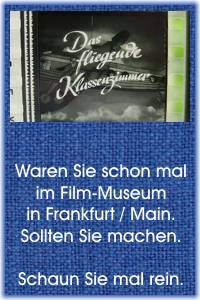Erläuterungen zu diesen 1948er US-AUDIO Seiten
Die hier stehenden amerikanischen Artikel aus 1948 (aus der US-AUDIO) sind teilweise sehr gewöhnungsbedürftig, weil sie erstens aus einer längst vergangenen Zeit stammen und zweitens, weil dort in den USA ganz "anders" gedacht wurde als bei uns in Old Germany oder in Europa.
Vergleichbar mit unseren deutschen Hifi-Magazinen etwa ab 1962 ist jedoch, daß auch diese Zeitschrift ihre Anzeigen- Kunden und -Leser (be- oder ab- ?) werben mußte.
Die Ausgaben der US-AUDIO von 1947 bis 1958 liegen in teilweise ganz miserablen PDF-Dateien vor, in denen die Reihenfolge der Seiten teils völlig wirr ist. Der Aufwande, einen einzigen Artikel komlett zusammenzubauen, ist daher erheblich. Die Fotos sind so gräuselig schlecht, daß sie nur in Ausnahmefällen eingebaut werden.
.
EDITOR'S REPORT
COVER PIX (Hintergründe für diese Foto)
PERHAPS you may have wondered why the remarkable cover photographs by Winston Wells which we have used in our last three issues have been presented with so little editorial comment.
Here's the story: We had planned on running a cover picture showing a sound wave traveling out from a loudspeaker and, because this is strictly a job for a top-flight audio engineer rather than a commercial photographer, Winston Wells volunteered to undertake it. Two methods were available to produce sound waves in a form which could be photographed, the "schlieren" (spark) method, and one described by Bergmann, by which a smoke pattern is formed in air at high relative humidity.
After considerable thought, Wells decided to use the latter method because, while extremely difficult to set up with the facilities available, it promised far more spectacular results. Two days were spent in preparation, but when everything was ready it was found that the sound power required to produce a pattern was so great that other occupants of the building complained and it had to be abandoned.
By this time we were perched on our deadline, minus the desired cover photo. But the resourceful Mr. Wells cooked up another method, one never before used so far as we have been able to discover, yet so simple that a mere explanation of the method was sufficient to convince your editor that it was unquestionably feasible. But, because the photograph had not yet been made at the time the contents page describing it had to go to press, our description was pretty vague.
The photograph, which is again reproduced on this page, represents a 3.300-cycle note traveling out from a small
speaker. The separation between the waves is thus of the order of four inches. The signal level used was only a few milliwatts and the same technique can be applied in determining the slip stream pattern of an airplane propeller, in plotting standing wave patterns in a room, leakage patterns around shielding, either at r-f, microwave, or audio frequencies, etc.
So many things can be done by this method that Mr. Wells has applied for a basic patent, and will present a complete story about it in an early issue.
The cover picture for this month, also by Winston Wells, likewise required a great deal of work. It shows a germanium crystal which has been chemically treated to improve its characteristics as an amplifier, and should be of extraordinary interest to crystallographers, as well as to audio engineers, for whom this new development holds great potentialities.
Recent investigations show that it presents great advantages in transconductance and power efficiency over vacuum tubes now used. From the scale shown, the degree of magnification can readily be calculated. In photographs of this type, crystallographers prefer flat lighting for maximum detail, but for spectacular effect, sharp contrast and brilliant highlights are desired. Note that Wells has produced both.
Our next scheduled cover is another presentation of a sound pattern, which undoubtedly will hereafter be called a "Wells" pattern, showing a unique application of this technique.
.
PERSONAL MENTION
Just a few days ago Dr. W. W. Wetzel of the Minnesota Mining and Manufacturing Company joined me for lunch and discussed, among other things, some of the new developments in tape recording. His company, as you know, is producing excellent magnetic tape as well as the sticky kind (das schlimme Ende). Dr. Wetzel has promised us more articles on magnetic recording in the near future. One which deals with an extremely important point is now awaiting company clearance.
Mr. W. S. Barrell, managing director of the recording subsidiary of E.M.I, in England arrived a few days ago. His organization produces "HMV" records, famous through-out the world. They record flat, at the outside turn, up to 20,000 cycles as a matter of course and their pressings lose very little. Mr. Barrell addressed a meeting of the Audio Engineering Society in New York and told of the work of the "British Sound Recording Society", of which he is president. An arrangement for an interchange of papers between the two Societies has been made.
J.H.P.



